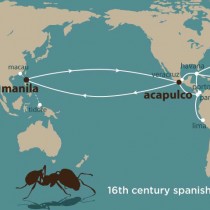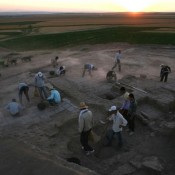9,000 years ago, in El Nido, Palawan (Philippines), a woman, likely young or middle-aged, was buried in a cave after she was disposed of in an elaborate and bizarre ritual.
After being defleshed and crushed, the bones of this woman were burned and put in a small box before she was put in her final resting place. A group of scientists have found her remains: well-preserved fragments of bones, underneath the cave of Ille in the Dewil Valley, in El Nido. Direct dating showed that her bones are between 9,000 to 9,400 years old, thus dating to the Early Holocene.
A study of her remains was recently published in the International Journal of Osteoarchaeology by Myra Lara and Victor Paz of the Archaeological Studies Program of the University of the Philippines – Diliman; H. Lewis of the School of Archaeology of the University College Dublin; and W. Solheim II of the Solheim Foundation, according to which the fragments “provided a unique opportunity to utilise anthropogenic bone modifications to reconstruct the postmortem history of a body prior to its deposition. Aside from being burnt, the remains were found to exhibit a combination of cutmarks, scrape marks, and impact scars indicative of disarticulation, defleshing, and hammerstone percussion. The results clearly demonstrate a complex ritualistic treatment of the body prior to interment that, so far, has not been recorded in Southeast Asia. This thus adds to the growing data of varying burial traditions during the early Holocene across the region.”
Scientists believe this to be the first cremation burial directly dated to this period in Southeast Asia, and the earliest dated proper cremation burial practice in the region—an extremely rare and important find, according to Lewis.
![Digitally reconstructed skull in Context 758 [Credit: International Journal of Osteoarcheology].](https://www.archaeology.wiki/wp-content/uploads/2013/10/Pallawan-cannibals_EN.jpg)



